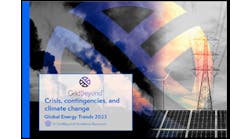Federal regulators next month will begin looking at how to compensate multi-use energy storage, a move that could lead to new inroads for microgrids and batteries in wholesale markets.
The Federal Energy Regulatory Commission (FERC) has scheduled a technical conference on the topic from 10 a.m. to 3 p.m, Nov. 9 (Docket No. AD16-25-000).
In its notice announcing the sesssion, FERC said that energy storage can provide services to numerous entities, including grid operators and utilities. The technology can serve both the wholesale and retail markets, and act as a form of generation, transmission and distribution.
FERC plans to explore when it may be appropriate for electric storage to provide multiple services in wholesale markets. The commission also wants to ensure just and reasonable compensation for multi-use energy storage, which could mean changes to grid tariffs.
For microgrid owners and operators, the technical conference may address issues about microgrids bidding into a wholesale market, according to Matt Roberts, executive director of the Energy Storage Association.
“If you are managing a hospital or university, would that system be allowed into a wholesale market and could you have three or four microgrids working in harmony as a bigger aggregate system to bid into wholesale markets?” said Roberts. “For microgrids, this provides an additional revenue stream.”
Roberts added that this would open up options for these types of networks to play a bigger role in expanding grid reliability and system efficiency. “For these distributed systems, the technology is capable of providing these value systems to the grid. FERC wants to lay out how to do it.”
Roberts explained that right now, FERC allows energy storage resources to participate in competitive generation markets and to receive cost-based recovery as a transmission asset.
However, there’s no mechanism for storage to do both things at the same time—and in doing so, maximize grid flexibility.
“The conference is looking at multi-use energy storage. It can be a transmission and generation asset,” he said.
There aren’t any technical limitations to storage serving as a multi-use asset, but there’s a need for a structure that would allow this to happen, he added.
The conference will unite energy storage companies, transmission companies and grid operators to better understand how to implement these uses, Roberts said. “We know there’s value there; how can we implement it?”
Could significantly boost storage
This effort, along with an ongoing FERC initiative—AD 1620—has the potential to significantly boost the energy storage industry, according to Roberts.
“AD 1620 is the broader scope initiative that’s more about standardizing the rules,” he said. For example, “If you have a large enough behind-the-meter system, can you bid it in independently? AD 1620 will answer some of the questions about how big you need to be to do this.”
During the technical conference, the commissioners will address issues related to utilizing energy storage as transmission assets compensated through transmission rates. In addition, grid support services and other services will be examined, the notice says.
Roberts added, “This is all new. It very much differs from the current paradigm. A generator like a big natural gas peaking plant can’t be transmission.”
Energy storage, on the other hand, is a new asset that sometimes acts as transmission, sometimes as a generator, and sometimes as load that uses energy.
FERC also will examine potential models for cost recovery, including recovery of energy storage resources used as transmission assets that also sell energy, capacity or ancillary services at wholesale. In addition, the commission will discuss potential models that allow energy storage to provide grid support services and get compensation.
Just as important, the commission said it will examine “practical considerations for electric storage resources providing multiple services at one,” meaning providing wholesale services, retail and end-use services.
Allowing energy storage to provide retail and wholesale services can dramatically increase the efficiency of the grid and reap savings to customers, Roberts said.
At the conference, most of the services that storage can provide will be discussed, he said. They include frequency regulation/response, a ramping product, transmission infrastructure deferral/replacement, capacity and energy of all types.
Track regulatory news about microgrids and energy storage. Subscribe to the free Microgrid Knowledge newsletter.







